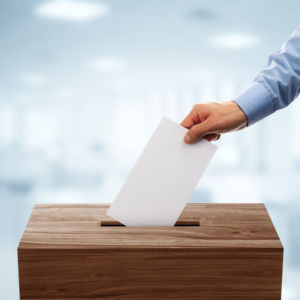The Supreme Court recently handed down what many considered a harsh defeat. The ruling in Husted v. A. Philip Randolph Institute, which upheld a ruling allowing Ohio to purge voters that it deems to have changed addresses from the rolls, makes it easier for other states to enact draconian Voter ID laws that will make it harder, not easier, to vote all around the country.
The response to this devastating result is to redouble efforts to go to the courts with hopes of addressing all of the problems that we believe are not in keeping with our laws protecting against discrimination. However, this is not the solution.
Over the last 40 years, the courts have consistently made it harder for those interested in finding ways to make voting more fair and accessible. A more promising and fruitful option is to elevate the local, grassroots activism that has sprung up in response to much of the worst instances of voter suppression that have taken place.
For example, in 2016, the presidential election was decided by just 22,748 votes. According to a voter study conducted by the University of Wisconsin-Madison, restrictive voter ID laws passed by the Republican state legislature kept up to 23,000 voters from the polls in that very election, in two heavily Democratic counties no less. This is especially important given that the Supreme Court ruled back in 2008 that it is not an undue burden to require citizens to have to show identification in order to vote, essentially facilitating those same laws in Wisconsin.
In spite of the valiant legal efforts by organizations like the ACLU (that continue even now), it is clear that the legal landscape provides less than we should hope for in terms of a path forward in terms of ending inequitable voting practices. And yet, the struggle continues in other ways.
As a result of those same voter ID laws in Wisconsin, the organization VoteRiders was founded to support voters in circumventing the processes that make it so difficult to vote in the state. They find ways to help citizens figure out the proper identification, conduct get-out-the-vote drives, and conduct clinics to help voters navigate the process of voting in Wisconsin. This has the effect of not just supporting voters who were disenfranchised but also engendering new support and participation by voters who may not have been affected otherwise. This is critical because the rationale behind many voter ID laws is to suppress voters who are otherwise disengaged from the political process.
In New York City, the congressional primary in the 14th District also shows how the regulations that shape how voters participate are deeply tied to who they support. The Democratic primary pits Joe Crowley, the incumbent and fourth highest ranking member in the House, against Alexandria Ocasio-Cortez, a 28-year-woman of Puerto Rican descent who, if elected, would be the district’s first Latina congresswoman.
Crowley is heavily favored to win because of his incumbency status, but also because the rules governing voting in New York primaries dictate that voters have to have been registered Democrats for months and months in order to even be able to vote. Undeterred, Ocasio-Cortez has been doing her best to register eligible but untapped voters in order to swing the election in her favor, understanding that the map as it stands is slanted against her.
The rules as written are not supportive to the development of an equitable, accountable voting system, but attempts to change them have been met with more harm than help. Focusing on the streets and the development of a bigger and more diverse electorate that demand more of their representatives is, counterintuitively, the best way forward in terms of developing fairer, more accessible voting.

